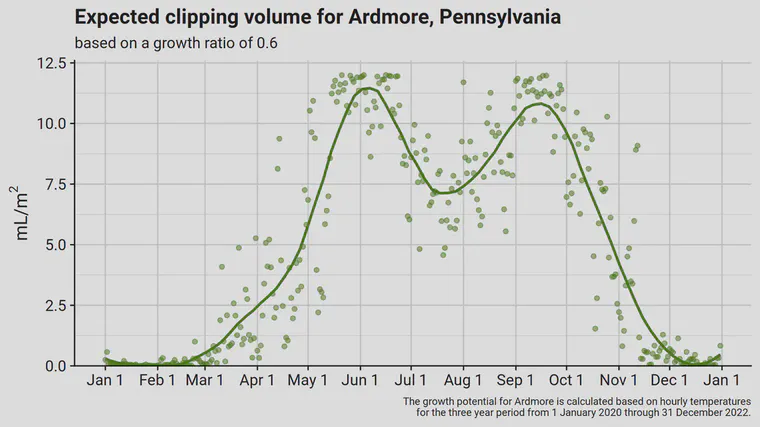What should my ClipVol be?
This is a common question. I heard another one recently, too. “How big of a bucket should I get to measure clipping volume?”
I like to answer these questions by looking at the site-specific conditions. One can use the turf GvX to get an idea for what a normal amount of clipping volume might be for your site.
The amount of clippings are going to be influenced by three main factors. One is weather. For example, I’d expect no clipping volume in Alaska in January, but some amount of clipping volume in July. A second factor is the grass species or variety being grown. There must be some differences here, but they may not be as big as you think. From looking at data from different grass species around the world, managing turf to produce a high quality putting surface tends to converge on similar clipping volumes. A third factor is how you like to—or how you need to—manage the grass. A course with 12,000 rounds can probably be managed with a really low clipping volume. A course with 60,000 rounds, maybe with that amount of traffic a higher growth rate (clipping volume) would be more appropriate.
The GvX accounts for all of these factors. Because the PACE Turf growth potential is already included in the GvX calculation, the weather effects are already included by default. All you have to do is make a reasonable guess at your species/variety adjustment and adjust the GvX for how you want to manage the turf.
Here’s an example for Ardmore, Pennsylvania.

The chart is showing each point as a daily value, but the main thing to look at here is the smoothed line through the points. For any date in the year, for that location, and knowing one wants to manage the grass with a GvX of 0.6, the line shows what the normal daily clipping volume would be.
One can also calculate weekly, monthly, and annual expected totals. For this example, using the past three years of Ardmore temperatures, and the GvX of 0.6, the expected annual clipping volume is about 1.86 L/m2.
As you can see, the clipping volume is not static. It’s not a huge amount of grass clippings, either. So I think a medium sized bucket works well for most people.
Be sure to see my One Bucket at a Time e-book about clipping volume for more information.